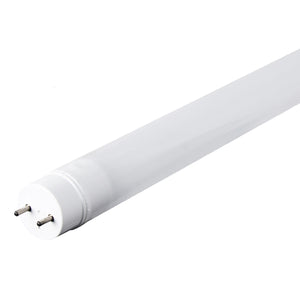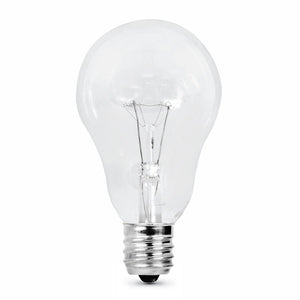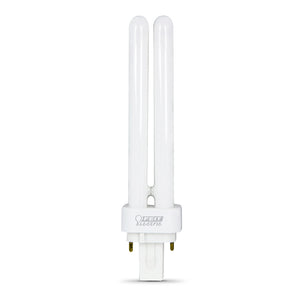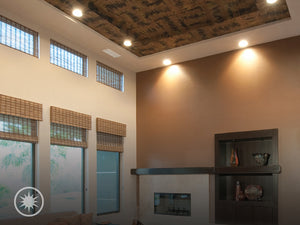Light Bulb Replacement Guide: Matching Shape, Base, and Technology
When it comes to buying light bulbs, understanding the shape, base, and technology options is essential for making the right choice. By matching the shape and base of your existing bulb and considering the benefits of different technologies, you can create the perfect lighting atmosphere while maximizing energy efficiency and longevity. Whether you opt for LED bulbs for their efficiency or smart bulbs for their convenience, selecting the right light bulbs will illuminate your home with style and functionality.
Part 1: Understanding Shape and Base
When it comes to light bulbs, the first aspect to consider is the shape and base of the bulb. Here are some common shapes you'll encounter:
• A-shaped Bulbs (A19): These are the standard bulbs most commonly used in household lamps and fixtures. They have a pear-like shape and a medium screw base (E26/E27).
• Globe Bulbs (G): These bulbs are common in bathrooms and vanities. They have a round shape, similar to a globe. They come in various sizes, such as G25 or G30, and have different bases like medium screw (E26/E27) or candelabra (E12).
• Chandelier Bulbs (C): Resembling a candle flame with a bent or blunt tip, these bulbs are commonly used in chandeliers, sconces, and decorative fixtures. They typically have a candelabra base (E12).
• Reflector/Mini-Reflector Bulbs (R/MR/PAR):These bulbs are designed to direct light in a specific direction. They are often used in recessed lighting and track fixtures. Reflector bulbs have a standard medium screw (E26/E27) or a twist and lock base (GU10).
Part 2: Choosing the Right Technology
Once you have identified the shape and base, the next step is selecting the appropriate technology for your light bulb. Here are the most common options:
• Incandescent Bulbs: Traditional incandescent bulbs are the least energy-efficient option but offer warm and familiar light for a lower initial cost. Note: They are being phased out in many countries due to their inefficiency.
• Halogen Bulbs: Halogen bulbs are an improved version of incandescent bulbs, offering slightly higher energy efficiency and longer lifespans. They are often used in floodlights or outdoor lighting.
• Compact Fluorescent Lamps (CFLs): CFL bulbs are more energy-efficient than incandescent bulbs, lasting up to ten times longer. They provide bright light but may take a moment to reach full brightness.
• LED Light Bulbs: LED technology has revolutionized the lighting industry. LED bulbs are highly energy-efficient, consume significantly less electricity, and have a remarkably long lifespan. They are available in a wide range of colors and can be dimmable. LED bulbs are the ideal choice for most lighting applications.
• Smart Bulbs: Smart bulbs incorporate LED technology and can be controlled remotely via smartphone apps or voice assistants. They offer a wide range of features, including dimming options, color-changing capabilities, and programmable schedules.
Remember to match the shape and base of your current bulb when purchasing a replacement to ensure compatibility with your fixtures and always check the packaging or consult with a knowledgeable salesperson if you have any questions.
Light Bulb FAQs
Q: What is the difference between incandescent, fluorescent, and LED bulbs?
Incandescent bulbs generate light by passing an electric current through a wire filament, producing heat and light as a byproduct. They are inexpensive but inefficient, as most of the energy is wasted as heat.
Fluorescent bulbs use electricity to excite mercury vapor, which emits ultraviolet light. The UV light then stimulates a phosphor coating inside the bulb, producing visible light. They are more energy-efficient than incandescent bulbs but contain small amounts of toxic materials. LED bulbs use semiconductors to convert electricity into light. They are highly energy-efficient, long-lasting, and contain no hazardous materials. They are initially more expensive but cost less in energy costs and bulb replacements over the life of the bulb.
Q: How long do different types of light bulbs last??
The lifespan of different types of light bulbs varies. Incandescent bulbs have the shortest lifespan, typically lasting around 1,000 to 2,000 hours. Compact fluorescent lamps (CFLs) generally last longer, ranging from 8,000 to 10,000 hours. Halogen bulbs have a similar lifespan to incandescent bulbs. Light-emitting diode (LED) bulbs have the longest lifespan, lasting anywhere from 25,000 to 50,000 hours or more. The actual longevity can vary depending on factors such as usage patterns, quality of the bulb, and environmental conditions. LED bulbs are known for their energy efficiency and extended lifespan, making them a popular choice for long-term lighting solutions.
Q: How much energy do different types of light bulbs consume?
Different types of light bulbs consume varying amounts of energy. Incandescent bulbs, known for their warm light, are the least efficient, typically using around 60 watts to produce light equivalent to a traditional 40-watt bulb. Compact fluorescent lamps (CFLs) are more efficient, using about 14 watts to produce the same amount of light. Light-emitting diode (LED) bulbs are the most energy-efficient, using only 9-12 watts to produce the same amount of light. LEDs also have a longer lifespan, making them the preferred choice for energy-conscious consumers due to their energy efficiency and longevity.
You will find answers to common queries and more helpful information that can assist you in resolving any issues on our FAQ section.































































